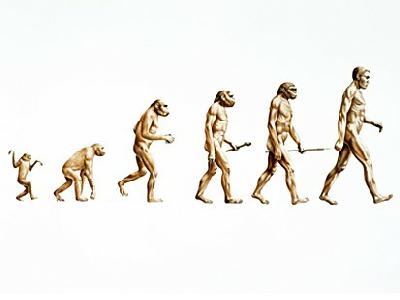
An example of evolution: the lineage of humans goes back through other hominids, our common ancestor with the chimpanzees, the gorillas and the monkeys.
Life evolves over time. The characteristics which organisms inherit from generation to generation change, making them better adapted to their environment.
Over long periods, evolution has radically remodelled entire ecosystems and the organisms within them. The evidence is everywhere in the fossils under our feet, in our bones, our cells and our DNA.
But why do species change? And how does it happen? Is it inevitable?
Natural selection provides the mechanism for evolutionary change.[1] It explains how particular traits survive from generation to generation while others die off. It accounts for the evolution of all living organisms, from bacteria through to plants and animals.
Natural selection is not the only mechanism for evolution. Other mechanisms for evolution include genetic drift, mutation and gene flow. See Wikipedia: Evolution: Mechanisms.
Author: Tom Brown
Copyright: public domain
Date last modified: 13th Oct 2011
Peer-review status: Not yet peer-reviewed
human evolution: source: unknown